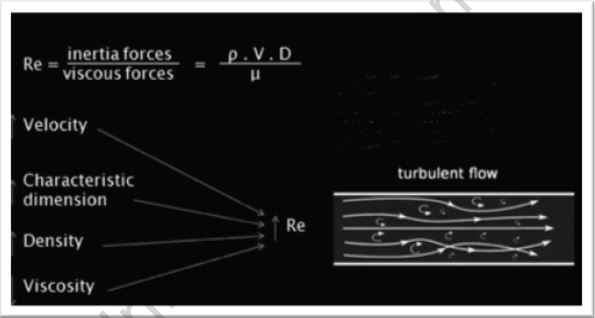Table of Contents
In contrast to laminar flow, which flows in clean channels or layers, turbulent flow is a type of fluid (gas or liquid) flow wherein the fluid suffers random fluctuations or mixing. The velocity of the fluid at a given point in a turbulent flow is changing constantly in direction and magnitude.
A Brief Outline
Even though the currents are mild, the flow of wind and rivers is often tumultuous in this sense. While the air or water swirls and eddies, the bulk of it flows in a definite direction. Except for laminar flow near the leading edge of solids flowing relative to fluids or exceptionally close to solid surfaces, most fluid flows are turbulent.
Important Concepts
Streamline flow in fluids is described as a flow in which the fluids flow in parallel layers with no interruption or mixing of the layers and the velocity of each fluid particle passing by remains constant over time at a particular position. The path travelled by fluid particles under steady flow circumstances is defined as a streamline.
Every point in a turbulent flow has a different empirical velocity. The power-law velocity profile is the most basic and well-known velocity profile.
In turbulent water flow, the velocity profile is flatter in the centre region of the pipe, which is the turbulent core, then in laminar fluid flow. When the flow is extremely close to the walls, the velocity slows dramatically. Because of the turbulent flow’s diffusivity, this is the case.
Everyday Life’s Turbulent Flow
- If you’ve ever seen windmills in your neighbourhood, you’re familiar with the concept of turbulent flow.
- The movement of windmills is caused by a high-speed turbulent airflow, which creates electricity for our homes.

The dimensionless Reynolds number, which is the ratio of kinetic energy to the damper in a fluid flow, can anticipate the onset of turbulence. Turbulence, on the other hand, has long eluded precise physical understanding, and the interactions within it generate a complex phenomenon.
Significance of turbulent flow in IIT JEE exam
The properties of solids and liquids, which make up 3 to 4% of the exam questions, cover a wide range of subjects. All you must do is understand each topic’s concepts. We should predict 10 to 12 marks underneath the topic based on the distribution of difficulty levels in past years’ tests.
FAQs
What is the Reynolds number at which turbulent flow occurs?
If the Reynolds number is larger than 3500 for external flow, the flow is turbulent.
What are some of the most common examples of turbulent flow?
The vast majority of industrial flows are turbulent. Turbulent flows, for example, are common in a water distribution system that transports potable water from a centralized treatment plant or wells to end-users.
What is the Reynolds number that is critical?
The laminar-turbulent transition, in which a laminar flow becomes turbulent, is connected with the critical Reynolds number. This is a very sophisticated process that we don't fully comprehend right now.






